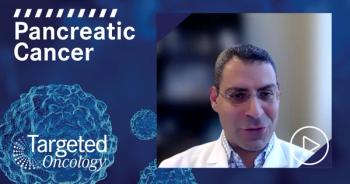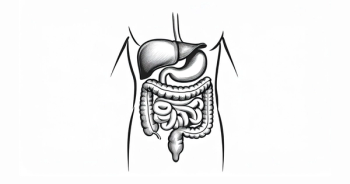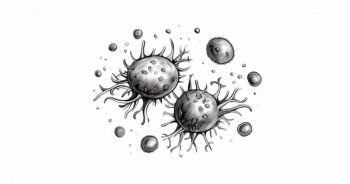
Penpulimab and Chemo: A New First-Line Option for Nasopharyngeal Cancer
In an interview, Aditya Shreenivas, MD, MS, discussed the approval of penpulimab in nasopharyngeal carcinoma and the study that supports it.
In April 2025, the FDA granted approval to the combination
The approval of the combination therapy was based on data from the phase 3 Study AK105-304 (NCT04974398), which showed a statistically significant improvement in median progression-free survival (PFS) of 9.6 months for the penpulimab plus chemotherapy arm compared with 7.0 months for the placebo plus chemotherapy arm (HR, 0.45; 95% CI, 0.33-0.62; 2-sided P <.0001).
In an interview with Targeted OncologyTM, Aditya Shreenivas, MD, MS, assistant professor, Department of Medical Oncology & Therapeutics Research, at City of Hope and an investigator of Study AK105-304 discussed the study, its findings, and this approval’s significance in the treatment landscape.
Targeted OncologyTM: Can you provide some background on the study? What are the unmet needs are that the study was looking to fill?
Shreenivas: This is a randomized phase 3 study of penpulimab along with chemotherapy vs chemotherapy and placebo in first-line nasal pharyngeal carcinoma. At this point of time, the only other drug which is approved by FDA in this setting is toripalimab [Loqtorzi]. There have been a couple of other trials worldwide, specifically in China [and Asia], which have utilized some other agents in this space. Obviously, we needed a second option in this space.
This study was truly a global study. Because of this, included sites across the globe, multiple sites in South America, the US, and in Canada. The site accrual was rather low in ex-Asian countries, because the incidence and the prevalence of this specific cancer is lower outside of Asia, so that is understandable. In terms of disease efficacy, it played a very important role in showing the drug’s efficacy outside of Asia as well.
Could you summarize the goals of the study and your findings?
The primary end point of the study was progression-free survival. At the interim analysis, the primary end point was met. The PFS was statistically significant. It was 9.6 months in the experimental arm vs 7 months in the placebo arm. The patients that benefited had a longer duration of response, 9.8 months vs 5.6 months. The hazard ratio of progression-free survival was significant and impressive—0.45, which means 55% reduction risk of progression or death.
The safety profile of the drug was also quite manageable. Most of these studies, you would see a higher rate of grade 3 toxicity. They could mainly be related to hematological toxicity, so they were similar in both groups. The immune-related toxicities were rather very low, 4.1%, and that can be attributed to one of the unique mechanisms of this agent, which has an Fc-null function. I would say that this drug and the combination [with chemotherapy] had a manageable safety profile, and that accounts for broader applicability.
One other point I wanted to make here: All the prespecified subgroup analyses showed that this drug was efficacious across different subgroups, including patients that had high PD-L1 and low PD-L1 [expression], patients that had liver metastases, no liver metastases, patients that have had high [Epstein-Barr virus (EBV)] DNA vs low EBV DNA. The drug performed well across all these pre specified subgroups.
Moving forward from these findings and approval, what do you see as the next line of research?
This study was essentially funded and supported by Akeso Bio, a company based in China, and they're looking at multiple compounds in combination with penpulimab. So that would be one aspect. How do we improve what we already know? How do we improve the response? How do we improve the PFS?
We also saw that maybe PD-L1 was not the best predictive marker here, because the response was seen across the board. So, looking at different immune markers that could inform us of a good response and help us select patients properly in terms of who would be a good candidate for these combination therapies. Having that information, looking at their historical profiles, sites of metastasis, EBV DNA, all that subgroup analysis would yield more results.
It is also important to note that this study has not given us the overall survival analysis. This was a crossover study, unlike some of the other studies in this space. It would be nice to see when the mature overall survival data is available.
Where there any benefits that penpulimab offers that were not available with previous therapies?
With the caveat of cross-trial comparison—you are comparing apples to oranges here—you need to understand that the hazard ratio of progression-free survival is rather impressive, 0.45, slightly better than some of the other drugs in this space. The other thing is that the immune-related events were also lower compared with toripalimab. The grade 3 immune-related events [rate] was 4.1% in this case, and I think it was higher in the JUPITER-2 study [NCT03581786]. So those 2 aspects caught my attention.
I want to emphasize this is truly a global study. There were no ex-Asia patients in the JUPITER-2 study, and JUPITER-2 did not have a crossover design. In this day and age, not to offer an agent in crossover becomes a little challenging.









































